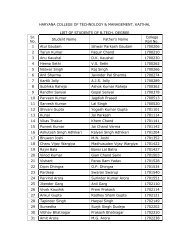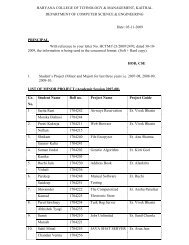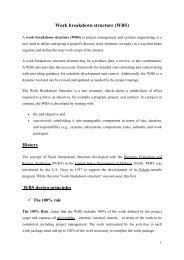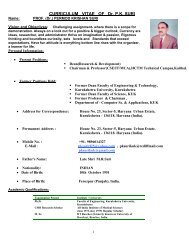Create successful ePaper yourself
Turn your PDF publications into a flip-book with our unique Google optimized e-Paper software.
LECTURE NOTES OF ADVANCED DATA STRUCTURE (MT-CSE 110)<br />
INTRODUCTION OF Infix, Postfix and Prefix<br />
Infix, Postfix and Prefix notations are three different but equivalent ways of<br />
writing expressions. It is easiest to demonstrate the differences by looking at<br />
examples of operators that take two operands.<br />
Infix notation: X + Y<br />
Operators are written in‐between their operands. This is the usual way<br />
we write expressions. An expression such as A * ( B + C ) / D is<br />
usually taken to mean something like: "First add B and C together, then<br />
multiply the result by A, then divide by D to give the final answer."<br />
Infix notation needs extra information to make the order of evaluation of<br />
the operators clear: rules built into the language about operator<br />
precedence and associativity, and brackets ( ) to allow users to override<br />
these rules. For example, the usual rules for associativity say that we<br />
perform operations from left to right, so the multiplication by A is<br />
assumed to come before the division by D. Similarly, the usual rules for<br />
precedence say that we perform multiplication and division before we<br />
perform addition and subtraction.<br />
Postfix notation (also known as "Reverse Polish notation"): X Y +<br />
Operators are written after their operands. The infix expression given<br />
above is equivalent to A B C + * D /<br />
The order of evaluation of operators is always left‐to‐right, and brackets<br />
cannot be used to change this order. Because the "+" is to the left of the<br />
"*" in the example above, the addition must be performed before the<br />
multiplication.<br />
Operators act on values immediately to the left of them. For example, the<br />
"+" above uses the "B" and "C". We can add (totally unnecessary)<br />
Prepared By :<br />
Er. Harvinder Singh<br />
Assist Prof., CSE, H.C.T.M (Kaithal) Page ‐ 169 ‐







